| C H A P T E R 4 |
|
Component Descriptions |
This chapter describes the components of the Netra CT 810 and Netra CT 410 servers. Some components are available only for the Netra CT 810 server, while others are available only for the Netra CT 410 server.
This chapter contains the following topics:
Components are either hot-swappable or cold-swappable:
TABLE 4-1 lists components available for Netra CT servers. All information applies to both the Netra CT 810 server and the Netra CT 410 server, unless otherwise noted.
|
A hot-swappable component. See Air Filters. |
|
|
A hot-swappable component. Must be installed with alarm rear transition module. See Alarm Cards and Alarm Rear Transition Modules. |
|
|
A hot-swappable component. Must be installed with alarm card. See Alarm Cards and Alarm Rear Transition Modules. |
|
|
A hot-swappable component. See Fan Trays and Fans. |
|
|
A hot-swappable component. See Hard Drives. |
|
|
A hot-swappable component. Must be installed with a corresponding host rear transition module. See Host CPU Boards and Host CPU Rear Transition Modules. |
|
|
|
|
A hot-swappable component. Must be installed with a host CPU board. See Host CPU Boards and Host CPU Rear Transition Modules. |
|
|
Hot-swappable components. Both the I/O board and the I/O rear transition module must be installed. See Satellite CPU Boards. |
|
|
|
|
|
|
Hot-swappable components. Both the satellite CPU board and the corresponding satellite CPU rear transition module must be installed. See Satellite CPU Boards. |
|
|
A hot-swappable component. Both the satellite CPU board and the corresponding satellite CPU rear transition module must be installed. See Satellite CPU Boards. |
|
|
A hot-swappable component. See System Controller Boards. |
|
|
A hot-swappable component. See System Status Panels. |
This section provides general information about host CPU boards in Netra CT servers. For detailed information about host CPU boards, refer to the following:
In addition, there are restrictions for each of these host CPU boards. Refer to the documentation for information.
Every Netra CT server contains one host CPU board. The Netra CT 810 servers and the Netra CT 410 servers use the same host CPU board. A specific slot is reserved for the host CPU board in both the Netra CT 810 server (slot 1) and the Netra CT 410 server (slot 3), indicated by a red board cage guide. FIGURE 4-1 shows where the host CPU board must be installed in both server models.
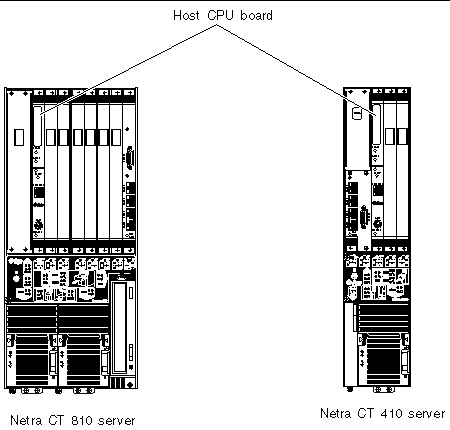
FIGURE 4-2 shows the ports on a Netra CP2140 host CPU board. FIGURE 4-3 shows the ports on a Netra CP2500 host CPU board. Do not use the TTY A port on a host CPU board for the Netra CT 810 server or Netra CT 410 server because the rear transition modules for those models all have a TTY A port.
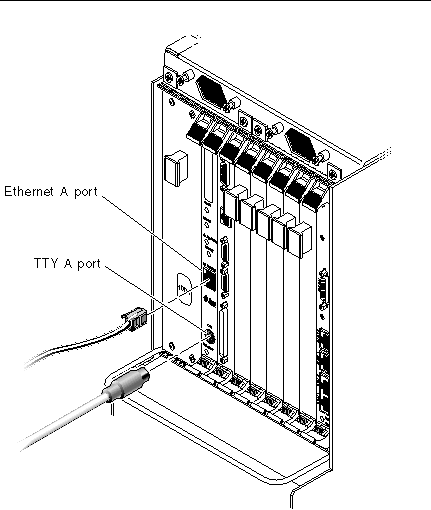
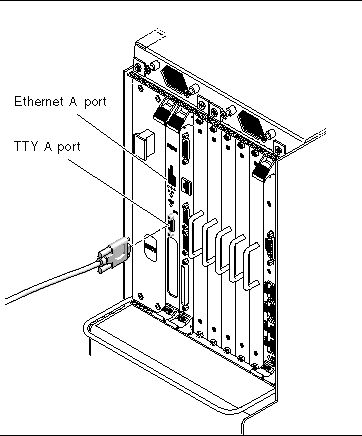
The host rear transition module (RTM) is required to provide connections from the host CPU board to standard I/O connectors. In addition, the host RTM provides two media independent interfaces (MIIs) to two 10/100 twisted-pair Ethernet connections. The host CPU board must be installed in the front of the server for the host RTM to work. The same host RTM is used by both the Netra CT 810 server and the Netra CT 410 server. Use only Netra CT-supported host RTMs in a Netra CT server.
The host CPU front termination board (FTB) terminates the SCSI chain for the Netra CT 410 server only.
The system controller board is a hot-swappable component located behind the system status panel; you must remove the system status panel to access the system controller board. The system controller board feeds system status information to the system status panel, where LEDs give feedback on the status of the key components within the Netra CT servers.
The location of the system controller board in a Netra CT 810 server is illustrated in FIGURE 4-4, and the location of the system controller board in a Netra CT 410 server is illustrated in FIGURE 4-5.
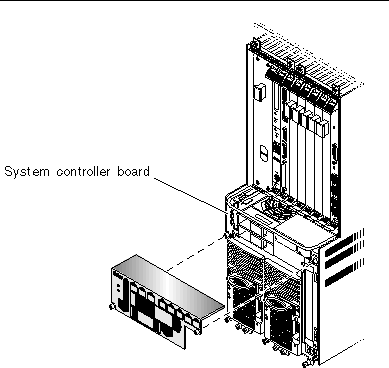
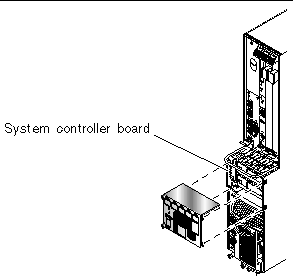
FIGURE 4-6 shows the location of the host rear transition module on a Netra CT 810 server, and FIGURE 4-7 shows the location of the host rear transition module on a Netra CT 410 server.
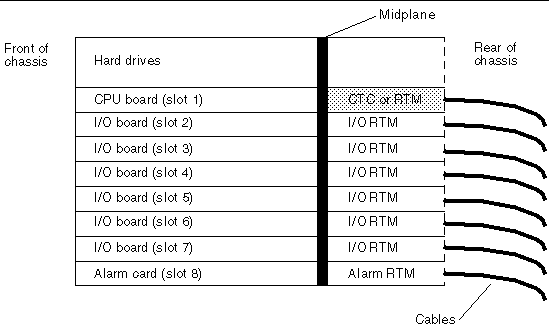
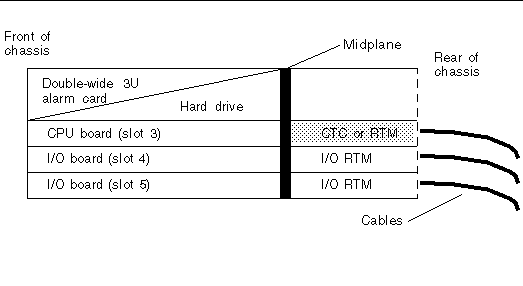
The satellite CPU board and rear transition module set consists of two separate boards:
The satellite CPU board is installed from the front of the Netra CT server; however, no cables are connected to the satellite CPU board.
The RTM extends the ports from the PCI mezzanine cards (PMCs) installed in the satellite CPU board to the PMC I/O modules (PIMs) installed in the satellite RTM. The satellite CPU board must be installed in the same slot at the front of the server for the satellite RTM to work. For example, if you install a satellite RTM in I/O slot 3 at the rear of a Netra CT 810 server, you must install the corresponding satellite CPU board in I/O slot 3 at the front of the server.
FIGURE 4-8 and FIGURE 4-9 are graphical representations of how satellite CPU boards align with the satellite RTMs. Note that, if you are facing the front of the server, the I/O slots read from left to right, whereas they read from right to left if you are facing the rear of the server.
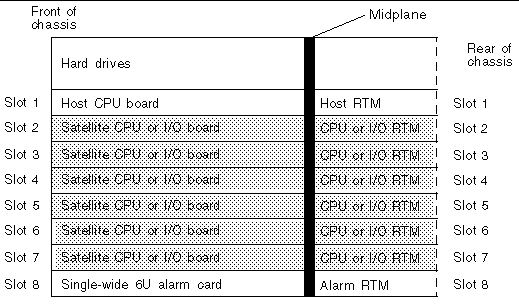
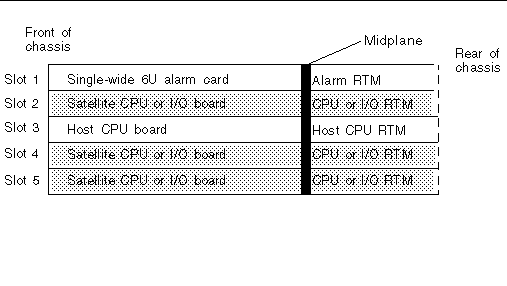
An I/O board and rear transition module set consists of two separate boards:
The I/O board contains the application-specific integrated cicuits (ASICs) for the associated I/O board and is installed from the front of the server; however, no cables are connected to the I/O board.
The I/O RTM extends the ports for a particular I/O board to the rear of the server. The I/O RTM and the I/O board must be installed in the same slot number for the I/O RTM to work. For example, if you install an I/O RTM in I/O slot 3 at the rear of a Netra CT 810 server, you must install the accompanying I/O board in I/O slot 3 at the front of the server.
If one of the two boards fails, replace both the I/O board and the I/O RTM. FIGURE 4-8 and FIGURE 4-9 show graphical representations of how the I/O boards align with the I/O RTMs. Note that, if you are facing the front of the server, the I/O slots read from left to right, whereas they read from right to left if you are facing the rear of the server.
Every Netra CT 810 server contains two power supply units, and every Netra CT 410 server contains one power supply unit. The Netra CT 810 servers and Netra CT 410 servers use the same power supply units.
For the Netra CT 810 server, one power supply unit is redundant. Feeds are supplied to each of the power supply units through the power distribution units (see Chapter 2 for information). Because each Netra CT 810 server has two power supply units, the server receives power from two power sources. If one power source or one power supply unit fails, the server continues normal operation using the remaining power supply. Note that this is not the case for the Netra CT 410 server, because it has only one power supply unit.
The locations of the power supply units in the Netra CT 810 server are illustrated in FIGURE 4-10, and the location of the power supply unit in the Netra CT 410 server is illustrated in FIGURE 4-11.
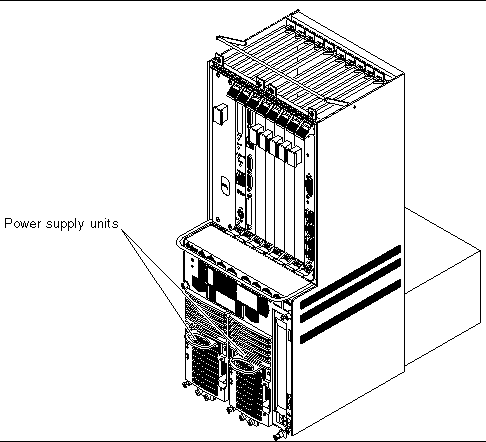
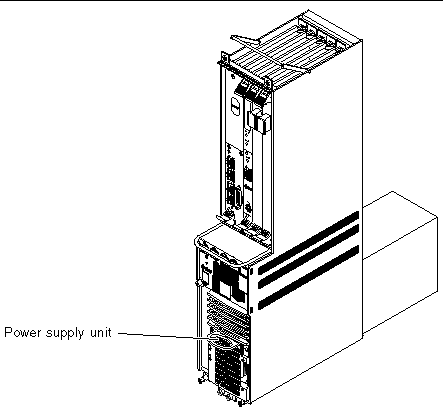
System status panels give feedback on the status of key components within Netra CT servers. The locations of system status panels in Netra CT 810 servers and Netra CT 410 servers are illustrated in FIGURE 4-12.
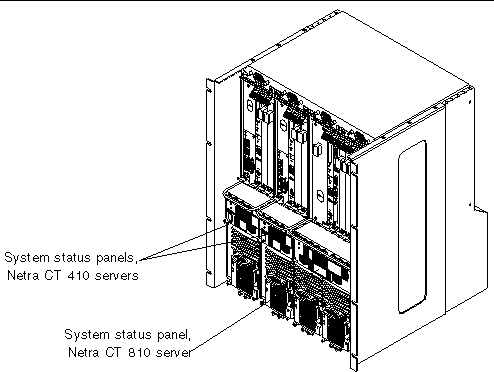
The system status panel has one set of LEDs for each component within that server. FIGURE 4-13 shows the LEDs on the system status panel for the Netra CT 810 server, and FIGURE 4-14 shows the LEDs on the system status panel for the Netra CT 410 server.

|
I/O boards or satellite CPU boards (●) installed in slots 2-7 |
||
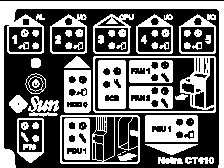
|
I/O boards or satellite CPU boards (●) installed in slots 4 and 5 |
||
Each major component in the Netra CT 810 server or Netra CT 410 server has a set of LEDs on the system status panel that gives the status on that particular component. Each component has either green Power and amber Okay to Remove LEDs (FIGURE 4-15) or green Power and amber Fault LEDs (FIGURE 4-16). Note that the components in the Netra CT servers all have the green Power LED. They have either the amber Okay to Remove LED or the amber Fault LED, not both.


A green system power LED and power on/off button is located on the system status panel. When the system is off, the system power LED is unlit. Pressing the system power button when the system is off starts the power-up sequence. Once the system is completely powered up, the system power LED remains on.
For detailed information about the states and meanings of the LEDs, refer to the Netra CT Server Service Manual.
Both the Netra CT 810 servers and the Netra CT 410 servers have two types of air filters: a power supply unit air filter, which filters the air going into the power supply, and a main air filter, which filters the air going into the server. Both air filters are located in the power supply unit.
The power supply unit air filter is located at the front of the power supply unit and the main air filter is located in a tray at the top of the power supply unit. Both sets of air filters should be replaced every three to six months. If your server environment is especially dirty, you might have to replace them more frequently. The power supply unit air filter must be in place for safe operation. FIGURE 4-17 shows the locations of the air filters in a Netra CT 810 server power supply unit, and FIGURE 4-18 shows the locations of the air filters in a Netra CT 410 server power supply unit.
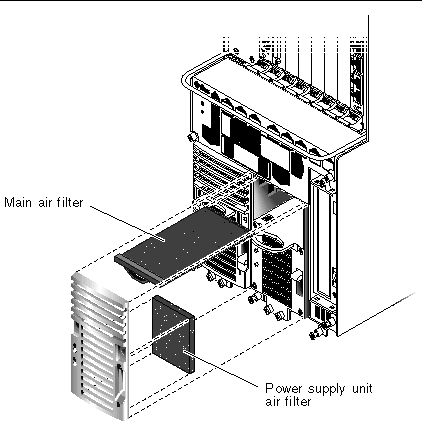
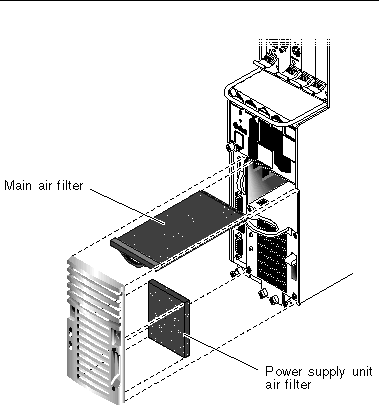
Both the Netra CT 810 servers and the Netra CT 410 servers have two fan trays. The fan tray for the Netra CT 810 server has a single large fan in each tray, while the fan tray for the Netra CT 410 server has two smaller fans in each tray. The fan tray is designed to be hot-swappable. High-speed fans are required to support Netra CP2500 boards.
If the temperature rises above 158°F (70°C), the CPU board sends out a warning that the system is overheating. If the temperature rises above 167°F (75°C), the system shuts down automatically. Note that the temperatures here are not ambient air temperatures, but rather the CPU temperatures that are monitored by a thermistor located under the heatsink on the host CPU board.
If one fan tray fails, you must replace the failed fan tray as soon as possible. Even though the system can run on one fan tray, if the temperature rises, a single fan tray might not be able to cool the system properly.
The fans are located underneath the board cage behind the system status panel (see System Status Panels for the location of the system status panel). They are recessed into the operations board cage to maximize the air flow across the CompactPCI boards. FIGURE 4-19 shows the locations of the fan trays in a Netra CT 810 server, and FIGURE 4-20 shows the locations of the fan trays in a Netra CT 410 server. Note that the system status panel is removed in both figures.
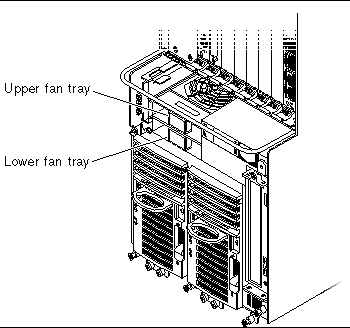

Hard drives are fully hot-swappable. Each hard drive has its own latching mechanism to ensure a positive lock with the chassis. You can have a maximum of two hard drives in the Netra CT 810 server and one hard drive in the Netra CT 410 server. The Netra CT 810 servers and the Netra CT 410 servers both use the same hard drives.
A specific slot is reserved for hard drives in both Netra CT 810 servers and Netra CT 410 servers. The hard drives are behind the drive bay cover.
Following are the SCSI IDs for the hard drives:
In addition, two separate SCSI chains are in the Netra CT 810 server for the SCSI devices:

A removable media module consists of either a DVD or a 4-mm digital audio tape (DAT) drive, either of which is placed in the system from the front. The removable media module is available only for the Netra CT 810 server.
Following are the SCSI IDs for the devices used in the removeable media module:
In addition, two separate SCSI chains are in the Netra CT 810 server for the SCSI devices. The removable media device and the upper hard drive (HDD 0) are both on the first SCSI chain; the lower hard drive (HDD 1) is alone on the second SCSI chain.

An alarm card is a standard component for both the Netra CT 410 servers and Netra CT 810 servers. Two different types of alarm cards are used in the servers:
Significant reliability, availability, and serviceability (RAS) functions are provided by the alarm card. The alarm card has its own CPU, a Motorola MPC850 processor, and its own real-time operating system and application software.
The alarm card and its accompanying software perform the following functions on a Netra CT server:
The alarm card has the following remote interfaces:
A specific slot is reserved for the alarm card in both the Netra CT 810 server and the Netra CT 410 server. FIGURE 4-23 shows the single-wide 6U alarm card used in the Netra CT 810 server. FIGURE 4-24 shows the double-wide 3U alarm card used in the Netra CT 410 server.
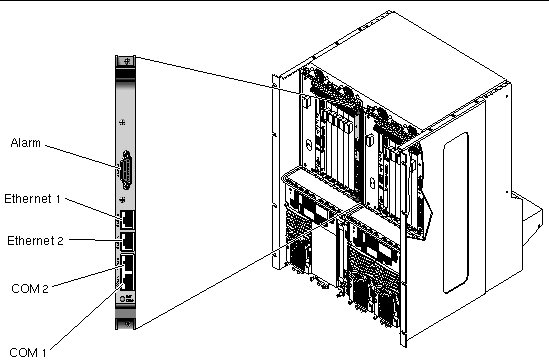

An alarm rear transition module (RTM) is paired with the alarm card in both the Netra CT 810 server and the Netra CT 410 server. Either the single-wide 6U alarm card or the double-wide 3U alarm card can be used with the alarm rear transition module. The alarm rear transition module must be installed in the same slot number, at the rear of the server, as the alarm card.
The alarm rear transition module extends the ports on the alarm card installed at the front of the server to the alarm rear transition module installed at the rear of the server. Ethernet port 1 is a 10-Mbps Ethernet port, and Ethernet port 2 is a 10/100 Mbps Ethernet port. FIGURE 4-25 shows the ports for the alarm rear transition module. FIGURE 4-26 shows the location of the alarm rear transition module in a Netra CT 810 server, and FIGURE 4-27 shows the location of the alarm rear transition module in a Netra CT 410 server.
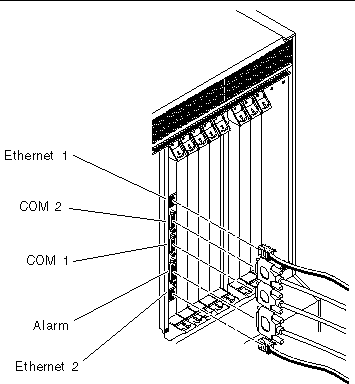
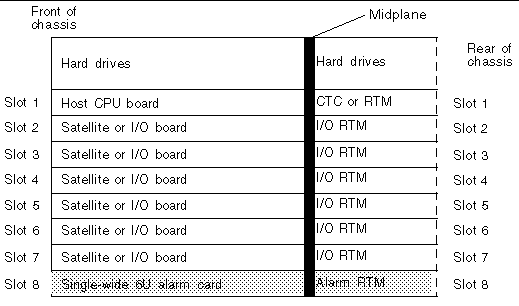
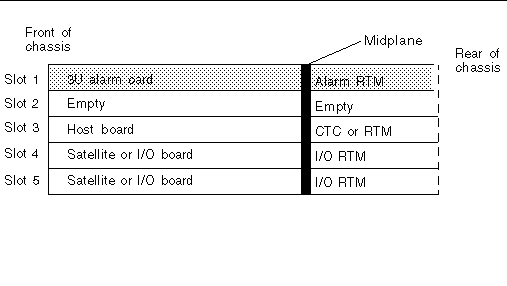
Copyright © 2007, Sun Microsystems, Inc. All Rights Reserved.